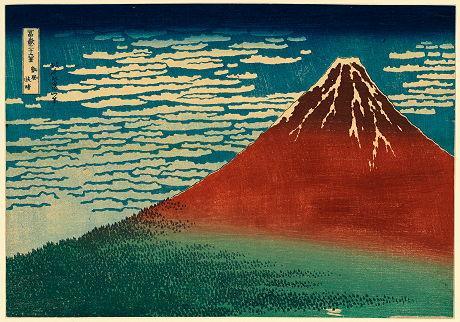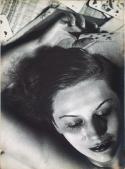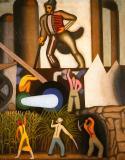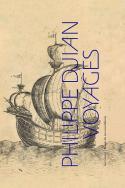Art Of The Day Weekly
#376 - from 19 February 2015 to 25 February 2015

Katsushika Hokusai, South Wind, Clear Sky (Gaifū kaisei), 1830-1831. From the series ‘36 Views of Mount Fuji (Fuji sanjūrokkei). Coloured woodcut, 37 x 25.5 cm Bibliothèque nationale de France, Sheet formerly in the Riviere Collection.
IN THE AIR
Japanese fever
ZURICH – The arrival of the American squadron commanded by commodore Perry in 1853 and then the beginning of the Meiji period in 1868 somehow forced Japan to open up to the outside world. Like a body of water too long retained, its taste, its sensitivity, its art flowed unexpectedly into the Western world. Not so much the traders, but rather the artists were the vectors, such as Van Gogh, Monet or even Tissot who were fascinated by the game of colors and the capacity to synthesize (wide colored surfaces, fresh colors, high angle and low angle effects, games of diagonals). Their influence went as far as the decorative arts through Gallé, Carriès, the virtuoso of sandstone, or Samuel Bing, the merchant of Art nouveau. The exhibition is greatly based on the rich belongings of the Folkwang museum in Essen, but is also completed with loans from Cincinnati, Geneva, Berlin or private collections. It gives us a complete panorama of this fever that seized Europe at the end of the XIXth century.
• Monet, Gauguin, Van Gogh… inspiration japonaise at Kunsthaus, from 20 February to 10 May 2015.
EXHIBITIONS
The Paris Havana axis
AJACCIO – Who knows that the museums in Cuba hold masterpieces of French painting, which the wealthy planters and traders of the XIXth century were crazy about? Here we see Tigre by Delacroix, a Wave by Courbet, a work by academic Gérard (Love vanquished by Chastity) or a perfect Sarah Bernhardt (who triumphed in 1887 in la Dame aux camélias), sketched by Clairin. These works have rarely left the Caribbean and now have landed on another island of Beauty, accompanied by Cuban classics (landscapes by Domingo Ramos, modern paintings by Pogolotti, the magic realism of Wilfredo Lam and Mendive, or revolutionary photographs by Korda and Corrales).
• Hasta siempre at the musée Fesch, from 20 February to 18 May 2015.

Pieter Boddingh van Laer, Self-portrait with magical scene, ca 1638-1639, oil on canvas, 78,8 x 112,8 cm, on loan in New York, Metropolitan Museum of Art © Courtesy The Leiden Collection, New York.
Little hoodlums of the XVIIth century
PARIS – Of course for us Caravaggio is the artist who best portrayed the flip-side of Roman life in his time. But many other artists also represented it – the dirt, the filth and the poverty behind the luxury of the Popes. The Petit Palais hosts a group of poor and bad boys, in a Baroque setting designed by the Pier Luigi Pizzi –as capricious as he is remarkable -, already shown at Villa Médicis. These drunkards and fighters, players and lovers of pleasure, painted and sometimes represented by Tournier, Rombouts or Manfredi mark the arrival of private amateur sponsors, far away from the religious paintings. They are also the perfect introduction to the great season of the XVIIth century which Paris is preparing with Vélasquez at the Grand Palais, Poussin at the Louvre and the collection of Roberto Longhi at the Jacquemart-André museum. Long live the Seicento!
• Les bas-fonds du baroque, la Rome du vice et de la misère at the Petit Palais, from 24 February to 24 May 2015.

Florence Henri, Femme aux cartes, 1930, vintage gelatin silver print, 39 x 28,5 cm. Private collection, courtesy Archives Florence Henri, Gênes Florence Henri © Galleria Martini & Ronchetti.
Florence Henri, a woman of the world
PARIS – The Jeu de paume continues to explore the female photographers who marked the XXth century. After Claude Cahun and Gerda Taro, and before Germaine Krull, enter Florence Henri. She is undoubtedly the most cosmopolitan of all of them. Born in New York (in 1893), she was brought up in Silesia by her German mother, she lived in London and then in Rome, studied in Berlin, Weimar and Munich where she met the pioneers of the Bauhaus movement and she finally settled in Paris in 1924. There, rich of so many experiences, she opened a photography studio that would be the most popular of the city of Lights. She was strongly influenced by the Surrealist approach, was a fan of photomontage, and created nudes, enigmatic still lives, compositions with a mirror as well as portraits of her contemporaries, Léger or the Delaunay couple among others. The retrospective chose to end in 1940, when the war marked a stop and Henri lost contact with the avant-gardes. During her last years -she died at Compiègne in 1982-, she turned to her first love, painting.
• Florence Henri, miroir des avant-gardes, at the Jeu de paume, from 24 February to 17 May 2015.
ARTIST OF THE WEEK
Sépànd Danesh, the poetry of the angle
One could think that all the angles and corners Sépànd Danesh painted in series symbolize the dead-end in which his Iranian parents lived before they emigrated with him to France when he was eleven. Any and all psychoanalytical interpretation is allowed or debatable, but it is worth looking into. The artist, born in 1984, the winner last year of the fondation Colas and who was the student of Giuseppe Penone, loves to systematically explore certain motifs. He mostly wants to make sure he exhausts them. His angles are constantly recreated with the same elements – a shelf, painted paper, a ruler. He produced over 100 000 drawings, often variations inside little 3-centimeter long squares, and also decided, in private, to copy the integral text by hand of Proust’s Recherche du temps perdu. Such an obsessional approach can undoubtedly not do without memory. Consequently, we can well evaluate the loss the fire of his workshop in Vincennes represented to the artist just as he was opening this exhibition in Paris.
• Sepand Danesh is exhibited at the Vitrine am (24, rue de Richelieu, 75001 Paris), from 5 February to 20 March 2015.
BOOKS
Sails ahoy!!
The exhibition will finish on 23 February 2015 but not to worry, the travels can always continue! This book accompanies an original hanging: the partial and biased and piecemeal (hence the interest) choices made by author Philippe Djian in the immense collection of the Louvre, on a universal theme: the journey. In a time when everyone waits around in airports and goes to the other side of the globe in 12 hours, it is hard for us to imagine the precautions, the anguish and the time the slightest move represented for our ancestors. We should experiment it by proxy: a ritual of protection to travel by cart in Mesopotamia, the model of a funerary boat with nine rows of rowers, not to mention what we should put into one’s tomb (New Empire, Egypt), or a panorama of Istanbul in 1818 to clearly see the difference between Bosphorus and the Golden Horn. The introduction text is by Philippe Djian himself who declares, “A writer is like a painter, with the difference that he must prepare the colors himself.”
• Philippe Djian, Voyages, Gallimard/Musée du Louvre, 2014, 204 p., €29.
OPENINGS OF THE WEEK

Les Chasses nouvelles
24 February 2015 - PARIS - Musée de la Chasse et de la Nature
The contemporary artist Julien Salaud gives his interpetation of Jean-Baptiste Oudry's tapestries
IN BRIEF
MADRID - The ARCO modern and contemporary art fair is being held from 25 February to 1 March 2015.
MANCHESTER - The Withworth Art Gallery reopened on 14 February 2015.
PARIS - The Musée Maillol has closed indefinitely on 15 February 2015 after its management company, Tecniarte, filed for bankruptcy.



